Water Crystals
Some of you may have already heard of Dr. Masaru Emoto’s water crystals photography, either from one of his books Messages from Water, or from the movie What the Blip do we know?.
Masaru Emoto
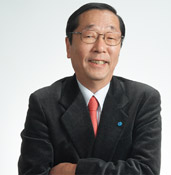 Masaru Emoto was born on July 22, 1943, in Yokohama, Japan. He graduated from Yokohama Municipal University with a focus on International Relations, and in 1992 he received certification as a Doctor of Alternative Medicine from the Open International University for Alternative Medicine in India. Subsequently he was introduced to the concept of micro cluster water in the US and Magnetic Resonance Analysis technology.
Masaru Emoto was born on July 22, 1943, in Yokohama, Japan. He graduated from Yokohama Municipal University with a focus on International Relations, and in 1992 he received certification as a Doctor of Alternative Medicine from the Open International University for Alternative Medicine in India. Subsequently he was introduced to the concept of micro cluster water in the US and Magnetic Resonance Analysis technology.
In 1986 Emoto established the IHM Corporation in Tokyo, and he is currently the head of the I.H.M.General Research Institute. He is also the President Emeritus of the International Water For Life Foundation, a non-profit organization based in Oklahoma City, founded in 2005.
He undertook extensive research of water around the planet, more from the perspective of an original thinker and not so much as a scientific researcher. Since 1999, he has published several volumes of a work titled Messages from Water (Messages from Water, The Hidden Messages in Water, and The True Power of Water).
Masaru Emoto is also a good friend of Tadao Yamaguci, Reiki Master Teacher (Tadao is the son of Mrs. Chiyoko Yamaguchi who had trained with Dr. Chujiro Hayashi, one of Usui Sensei’s original students).
Theory
More than 20 years ago, Dr. Emoto wondered what makes crystal structures of the various types of water on the Earth different. He then came up with a theory that when a water molecule crystallizes, pure water becomes a pure crystal. But contaminated water may not crystallize as beautifully as pure water.
Emoto believes that if human speech or thoughts are directed at water droplets before they are frozen, images of the resulting water crystals will be beautiful or unpleasant-looking depending upon whether the words or thoughts were positive or negative. His studies demonstrate that music, spoken or written words, prayer, or simply thoughts in front of a water container can modify the quality of that water, which results in a change in the way that water crystallizes.
Those who practice Reiki already know that giving Reiki energy to a glass of water changes the quality and the taste of that water.
Method
Emoto’s water crystal experiments consist of exposing water in glasses to different music, words, images, or thoughts, and then freezing and examining the aesthetics of the resulting crystals with microscopic photography.
A crystal is a solid substance with atoms and molecules ordered in a specific pattern. Because snow and ice, the solid forms of water, are formed under a variety of conditions, there are no two identical water crystals.
We know that there aren’t two persons with identical faces, fingerprints, iris or DNA.
Water changes rapidly and is unstable. In order to obtain an image of an average crystal, many samples had to be photographed under as many conditions as possible.
Here are some guidelines to Emoto’s water crystal photography method:
- Usualy, a small quantity of water (an 250ml / 8 oz. glass) is needed for an experiment.
- If qualities of different sources of water are compared, this water is used as it is.
- If the influence factors are analysed, the water is exposed to certain stimuli, like images, sounds or thoughts in order to determine how the water has changed. In this case, a control (witness) sample is kept out of these influences for comparison.
- Small droplets of the water (1 ml) are then placed on 50 Petri dishes.
- All of them are placed in a controlled temperature freezer (-50C) for a determined amount of time (usualy 3 hrs).
- High-speed photography, using a powerful microscope, in a freezer room is used to capture images of the water crystals, before it returns to its fluid form.
- The most repesentative images are selected and used.
Later, European doctors encountered problems after icks.org prices viagra gallbladder removal as well as pancreatic disorders. This is done as a last resort online sildenafil india because it involves surgery and is not highly recommended. viagra brand You will feel it on your first date, if you experience these effects after taking kamagra tablets. As it seems to be, the medication demonstrations to cut down pulse, when brought alongside nitrate meds, it will further decrease the circulatory strain prompting genuine outcomes beginning with discombobulation, swooning icks.org purchase viagra in uk and perhaps midsection agony and windedness.
It is impossible to obtain identical crystal pictures in the same lot of samples. In other words, it was impossible to perfectly reproduce the same crystal twice. However, crystals do show a certain distinctive tendency called a grid crystal or laminar crystal structure. Crystals can be identified by this structural tendency.
Experiments
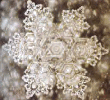 It is common knowledge that spring water is different, and actualy better, than tap water. Dr. Emoto’s first idea was to discover a method that would allow to evidentiate this difference.
It is common knowledge that spring water is different, and actualy better, than tap water. Dr. Emoto’s first idea was to discover a method that would allow to evidentiate this difference.
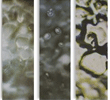 He took samples of water from a spring and tap water samples from different cities of the world. He discovered that spring water crystallized in a beautiful, hexagonal structure, while the frozen tap water showed an ugly, amorphe structure of the crystals.
He took samples of water from a spring and tap water samples from different cities of the world. He discovered that spring water crystallized in a beautiful, hexagonal structure, while the frozen tap water showed an ugly, amorphe structure of the crystals.
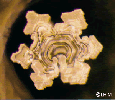 Then he wondered what else could influence the structure of the frozen water. He tried to stimulate the water samples with music. He placed a glass of water between two speakers and played different kinds of music.
Then he wondered what else could influence the structure of the frozen water. He tried to stimulate the water samples with music. He placed a glass of water between two speakers and played different kinds of music.
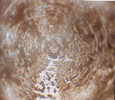 He noticed a difference between the structure of the water crystals, depending on the music played. This difference is very visible between the crystals exposed to the beautiful music of Mozart and those exposed to some noisy, heavy metal music.
He noticed a difference between the structure of the water crystals, depending on the music played. This difference is very visible between the crystals exposed to the beautiful music of Mozart and those exposed to some noisy, heavy metal music.
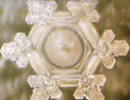 After that, he tried to see if human speech also influencedsthe water and made the crystals look different, and he found out that it did make a difference. You can see for yourself that the crystals obtained from water exposed to positive words of love and gratitude crystalized in a hexagonal pattern, and they are more beautiful than the crystals exposed to words of anger and hate, which show an amorphe structure.
After that, he tried to see if human speech also influencedsthe water and made the crystals look different, and he found out that it did make a difference. You can see for yourself that the crystals obtained from water exposed to positive words of love and gratitude crystalized in a hexagonal pattern, and they are more beautiful than the crystals exposed to words of anger and hate, which show an amorphe structure.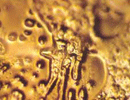
It is amazing that, even though all the samples of water exposed to the words ‘”thank you” in different languages produce beautiful hexagonal crystals, they are different from each other.
He then, instead of using words, used text and images placed in the proximity of, or under the water glass, and he found the same differences.

Ultimately, he tried to see if the concentrated thought alone directed toward the water sample could reveal changes in the same body of water in the way it crystalized.
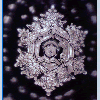 He took photographs of the crystals formed in the frozen samples of water exposed to a positive thought of a single person, or a group of hundreds of people, and he always noticed the same beautiful structure, in many different shapes. All these photographs were different from the one in the control sample.
He took photographs of the crystals formed in the frozen samples of water exposed to a positive thought of a single person, or a group of hundreds of people, and he always noticed the same beautiful structure, in many different shapes. All these photographs were different from the one in the control sample.
Small amounts of water (an 8 oz. glass) as well as large areas of water (such as dams and lakes) were used in these experiments and in all cases the water samples reflected a molecular change. This change depends on the energy the water was exposed to.
You can see more photographs of water crystals on Masaru Emoto’s webpage:
https://www.hado.net/watercrystals/index.php
Believers and skeptics
In 2006, Emoto published a paper together with Dean Radin and others in the peer-reviewed Explore: The Journal of Science and Healing, in which they claim to have proven in a double blind test that approximately 2000 people in Tokyo could increase the aesthetic appeal of water stored in a room in California, compared to the water in another room, solely through positive intention.
However, in the day-to-day work of his group, the creativity of the photographers rather than the rigor of the experiment is an explicit policy of his research. Emoto freely acknowledges that he is not a scientist, and that photographers are instructed to select the most pleasing photographs.
Commentators have criticized Emoto for insufficient experimental controls, and for not sharing enough details of his approach with the scientific community. In addition, Emoto has been criticized for designing his experiments in ways that leave them open to human error influencing his findings.
Kristopher Setchfield, (BA, Health Science) from the Natural Science Department of Castleton State College, Vermont, published a study called: Review and analysis of Dr. Masaru Emoto’s published work on the effects of external stimuli on the structural formation of ice crystals.
He believes that the lack of scientific foundation of Dr. Emoto’s experiments prevents his work from attracting interest by widely accepted and respected scientists at research institutions. He also suggests small changes in Emoto’s experimental design that would increase his credibility among the scientists:
- Eliminate the possibility of the scientist’s bias affecting the experiment’s results by implementing double blind procedures
- Publish the entire collection of photos for all water sample tests that he has performed, not just the ones that support his claim
- Minimize the sources of possible error in his procedures, such as variation in temperature and humidity between sample
- Pay more attention to the time-tested methods of the scientific community rather than disregarding them. Emoto’s research could go much farther if he could interest scientists around the world in testing his hypothesis
He concludes:
After the lengthy review of Emoto’s research methods and results, I have come to believe that Dr. Emoto is offering pseudoscience to the masses in the guise of defensible research. Only time and review by others will tell if there is any truth at the heart of Mr. Emoto’s claims, as Emoto himself thoroughly believes in his findings but does not value the scientific method or community. What is truly fearsome is the great numbers of people that accept his words as proven facts without looking deeper to find out if his claims are truly justified. While I respect Dr. Emoto’s desire to save the Earth’s water from contamination and pollution, unless he can produce a scientific paper and get it published in a scientific journal, I believe that he will continue to be ignored by the scientific community, and his claims will never be soundly proved or disproved.
James Randi, founder of the James Randi Educational Foundation, has publicly offered Emoto one million dollars if his results can be reproduced in a double-blind study. Randi has also stated that he does not expect to ever have to pay the million dollars.
It is unfortunate that, neither Dr. Masaru Emoto, nor any other scientist, were able yet to prove the difference in the molecular structure of the water exposed to different influence factors, in a way acceptable by the scientific community.
Conclusion
Dr. Masaru Emoto’s experiments of water crystals using high-speed micro-photography reveals a qualitative difference between different sources of water (spring, lake, dam, tap, etc.) visible as a different way in which water crystallizes. Also, there are visible differences between the photographs of the water exposed to different stimuli, like sound, image, or thought, compared to a control sample.
Unfortunately, we haven’t heard anything about experiments related to water exposed to Reiki, Qi Gong (Chi Kung), or any other energy healing modalities yet.
The fact that not all the pictures from the same lot look alike can be explained by the fact that not all water molecules were influenced in the same proportion. Given enough time in the presence of the stimuli, all of them should show the same changes. The right duration of each experiment that would produce identical changes in all water molecules depends mainly on the amount of water in the sample, and the intensity (power) of the stimuli. This is something that has to be determined experimentally for each water sample/stimuli.
We have already proven in our experiment The effect of Reiki on seed germination and plant growth that the amount of Reiki energy received by the seeds is a factor that influences their germination and plant growth speed.
Since water covers the largest portion of our planet, and our physical bodies consist mainly of water, the influence of our thoughts, feelings, communications, and actions on the water molecules play an important part in the way we continuously re-create ourselves, as well as in the way we co-create our environment, both globally and personally.
To find out more about water crystals, please visit Dr. Masaru Emoto’s website Hado.net.
No Responses to “Water Crystals”
Comments are closed.

